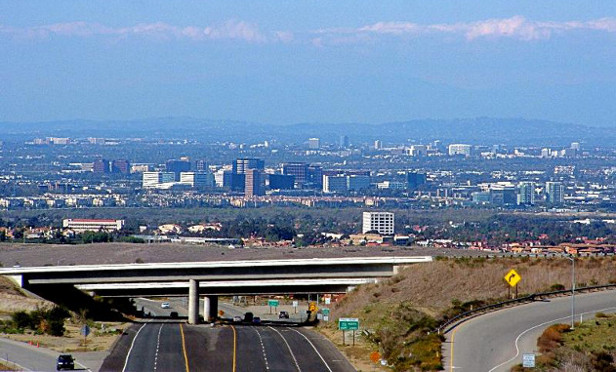 The Inland Empire industrial market held strong through the first quarter. The impact of the coronavirus pandemic has shown up in some quarterly reports for other asset classes; however, research from Kidder Mathews show the Inland Empire did not show any signs of slowing at the start of the year, despite the disruption. The quarter closed with industrial vacancy down 20 basis points to 4% and net absorption of more than 6 million square feet, including a 1.2 million-square-foot lease signed by Kimberly-Clark Corp.
The Inland Empire industrial market held strong through the first quarter. The impact of the coronavirus pandemic has shown up in some quarterly reports for other asset classes; however, research from Kidder Mathews show the Inland Empire did not show any signs of slowing at the start of the year, despite the disruption. The quarter closed with industrial vacancy down 20 basis points to 4% and net absorption of more than 6 million square feet, including a 1.2 million-square-foot lease signed by Kimberly-Clark Corp.
"We had pretty good momentum from the fourth quarter of 2019 into 2020, and we have had three years of very strong metrics and momentum that has carried us year-over-year into a very positive climate and activity," Dave Burback, SVP and managing director of Kidder Mathews' Inland Empire office, tells GlobeSt.com. "If you broke the quarter down into thirds, the first two months of the year were very positive. It started to take a toll in March."
The industrial sector, in general, is widely expected to outperform other asset classes through this crisis—although experts are quick to remind that no asset class will be unscathed. If that is the case, the Inland Empire's industrial market is the best-positioned geographic market in the nation. "The Inland Empire will benefit from this trend more than any other geographic region in the country," says Burback. "It not only has the largest ports in the country but it has the ability to expand distribution capacity, specifically in the ecommerce arena."
There is even the potential for upside in this event, particularly among ecommerce retailers that have actually seen an increase in sales. Burback says gained business is already a reality. "Everyone got sent home. Many people assume that everyone in this country is an Amazon customer, but that is far from the truth," he says. "People are now at home using Amazon for the first time, and they get a package and become believers. Historically, ecommerce has been increasing its market by 15% year-over-year, and I think that will accelerate, maybe to 25% going forward year-over-year. That success will largely be at the expense of retail."
Prior to the pandemic, the Inland Empire had a supply demand imbalance, and while it is still too early to understand the real impact of this event—and the first quarter report data isn't completely correlated—that supply-demand imbalance won't disappear following the pandemic. In fact, it could become more severe. In the first quarter, more than 5 million square feet of new industrial space came to market, and the vacancy rate continued to inch down to 4%. As a result, many developers are pushing ahead on current projects. "Large development projects are moving forward. It takes a good amount of time to entitle land for industrial use to build the larger industrial buildings," says Burback. "Those seem to be continuing on because when we come out of the back end of this, the timing will be good for new product to meet the needs of traditional warehouse distributors and ecommerce."
This isn't to say that the Inland Empire doesn't have some hard days ahead. "We could have this conversation three months from now, and it will be night and day," says Burback. "I think there will be a significant impact, but out of all of the food groups, industrial will fair better than others."
© Touchpoint Markets, All Rights Reserved. Request academic re-use from www.copyright.com. All other uses, submit a request to [email protected]. For more inforrmation visit Asset & Logo Licensing.






